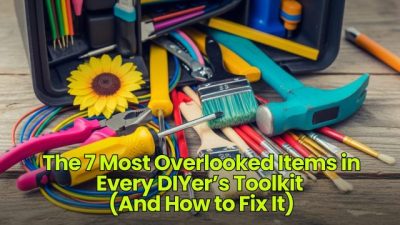5 Ways To Eat Your Vegetables Without Trying
By Daily Cork
March 25, 2014 • Fact checked by Dumb Little Man

The basic tenets of healthy living are simple. You need to eat more plants. Sounds easy, right? You’d think so, but as you know, it takes an act of concerted will to do the right thing. The world certainly doesn't do you any favors.
There are a lot of reasons why eating fresh vegetables doesn't come easily. They have to be prepared more than other foods, they can be more expensive than cheap processed food, and of course…..they can taste terrible. (If not prepared well).
The best way to eat more plants is not through trying to summon more discipline, because that’ll eventually run out. (Although a little helps) The best way is by making the impediments in the previous paragraph less true. If vegetables tasted good, were more convenient and cheaper, you’d probably eat more of them, all else being equal. This might be true of you, and it’s probably more true of other people living in your house. After all, you were interested enough to read a report about how to eat more of them, and they weren't.
The following list is not exhaustive, but it’s a useful start to help yourself and others give the body the foods it really needs.
Tip 1: Puree vegetables and add them to other dishes.
You can’t reject what you can’t detect. Pureed food is condensed and can be mixed with other soups and sauces without making a dint on its flavor. This method has been tested and passed on the pickiest of eaters: little kids. A study conducted in the Journal of Clinical Nutrition found that kids who ate meals with pureed vegetables secretly added into them ate the same amount of food as before, but consumed 142 less calories per meal, and reported no extra dissatisfaction with their food. If it worked on them, it’ll work on you too.
When you do this, add vegetables that naturally go with your meal to avoid changing the taste. For example, if you’re cooking pasta, puree peppers and onions and add them to the sauce. For a stew, use carrots and celery.
Tip 2: Buy a Blender
The blender has been the centerpiece of the raw foodie’s kitchen for years. Anyone who’s experimented with homemade juices and smoothies can tell you it’s easy to come up with concoctions that taste good despite the presence of icky-tasting greens. Consider my morning routine: after my daily run I add spinach, wheat germ, and maybe an additional vegetable to a berry smoothie. That’s a lot of foul tasting stuff. But with some fruit, plain yogurt and honey, you don’t even notice it’s there.
To get your creative juices flowing, there are three recipes at the end of this letter to try out.
Tip 3: Eat the Same Food Everyday
Behavioral research has repeatedly demonstrated that your perception of the food you eat changes after repeated exposure. Over time the food loses its remarkable qualities and your taste-aversion starts to wane. You become more accepting of the food, have greater expectations of fullness, which reduces your portion size and increases your feelings of satisfaction. Food repetition has proven to be quite effective at gently influencing the choice patterns of children over time, and can even reverse negative perceptions of a food with no additional changes. While it’s best to get a wide variety of produce, some vegetables are better than none at all.
Tip 4: Buy Your Food With Cash
Perhaps surprisingly, the option of cash vs credit has a very large influence on your tendency to choose healthy or junk foods. A study on school health written by the USDA found that the purchasing decisions of college students who bought food with cash were very different than students who used a card.The students who paid with cash bought less processed food, consumed less calories, and ate more produce than the other group.
The correlation might seem puzzling, but the effect is rooted in a basic principle of human psychology: you choose your actions more carefully when they’re more difficult. Paying with cash is more psychologically gripping than paying with a card, and it causes you to think carefully about what you’re buying, and sub-consciously steers you away from spontaneous eating.
Tip 5: Eat At Home
When you eat in your own kitchen, you’re more aware of dietary quality and more likely to eat a broader array of foods. Even better, eating at home tends to create better eating habits over the long run. A 10 year study conducted at the University of Minnesota found that young adults who consistently made their own meals ate healthier, more balanced meals with a greater amount of fruits and vegetables 5 years later than people who did it less often. Their enjoyment of cooking for themselves also increased over time, and were more likely to do it than when they started.
What’s more, increasing the amount of time you spend eating food decreases the amount of calories you consume and increases your enjoyment of your meal. It’s unrealistic to completely shift from commercial to homemade food, so make slight changes that you can easily incorporate into your eating patterns and go from there.
Author: This article written by Jonathan Bechtel
Share:







